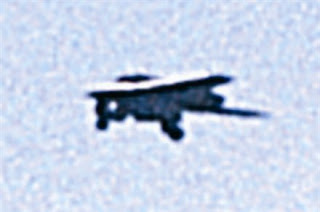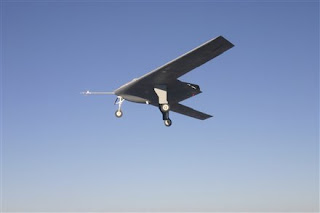APPLY FOR THIS OPPORTUNITY!
Or, know someone who would be a perfect fit? Let them know!
Share / Like / Tag a friend in a post or comment!
To complete application process efficiently and successfully, you must read the Application Instructions carefully before/during application process.

The so-called “Beast of Kandahar,” a mysterious UAV that was recently photographed in the skies over Afghanistan. The aircraft bears a striking resemblance to the failed “Polecat” UAV, developed several years ago by Lockheed’s Skunk Works (photo courtesy of Air & Cosmos, via Aviation Week).
Aviation circles have been buzzing over a mysterious UAV, recently photographed near the allied airfield at Kandahar, Afghanistan.
A French magazine, Air & Cosmos, was apparently the first to publish to picture of the aircraft earlier this year. The photo quality isn’t particularly good, but even untrained eyes can recognize that the UAV isn’t a Predator, Reaper or Global Hawk, types often seen over Afghanistan and Iraq.
So what is the mystery aircraft? The folks at Aviation Week have noted a similarity between the “Beast of Kandahar” and Lockheed’s “Polecat” demonstrator, which was (supposedly) cancelled after a crash in 2006. But the sighting in Kandahar suggests that Polecat–or elements of the design–are living on, in a stealthy UAV that is either operational, or undergoing flight testing in a combat theater.
Of course, that raises another question. Exactly what is the UAV’s mission in Afghanistan? The Taliban and Al Qaida don’t have radars or an integrated air defense system (IADS), so there’s no real requirement for a stealthy drone in that campaign. On the other hand, a very low-observable, high endurance UAV would be ideally-suited for keeping tabs on nuclear facilities in neighboring Iran or Pakistan.
The picture below is that of a Polecat during a test flight. No one is saying that the UAV sighted at Kandahar is the same one built by the Skunk Works earlier this decade. But the two aircraft do appear to share a common lineage. If nothing else, as Aviation Week observes, the drones came from the same litter.
How to Stop Missing Deadlines? Follow our Facebook Page and Twitter
!-Jobs, internships, scholarships, Conferences, Trainings are published every day!


